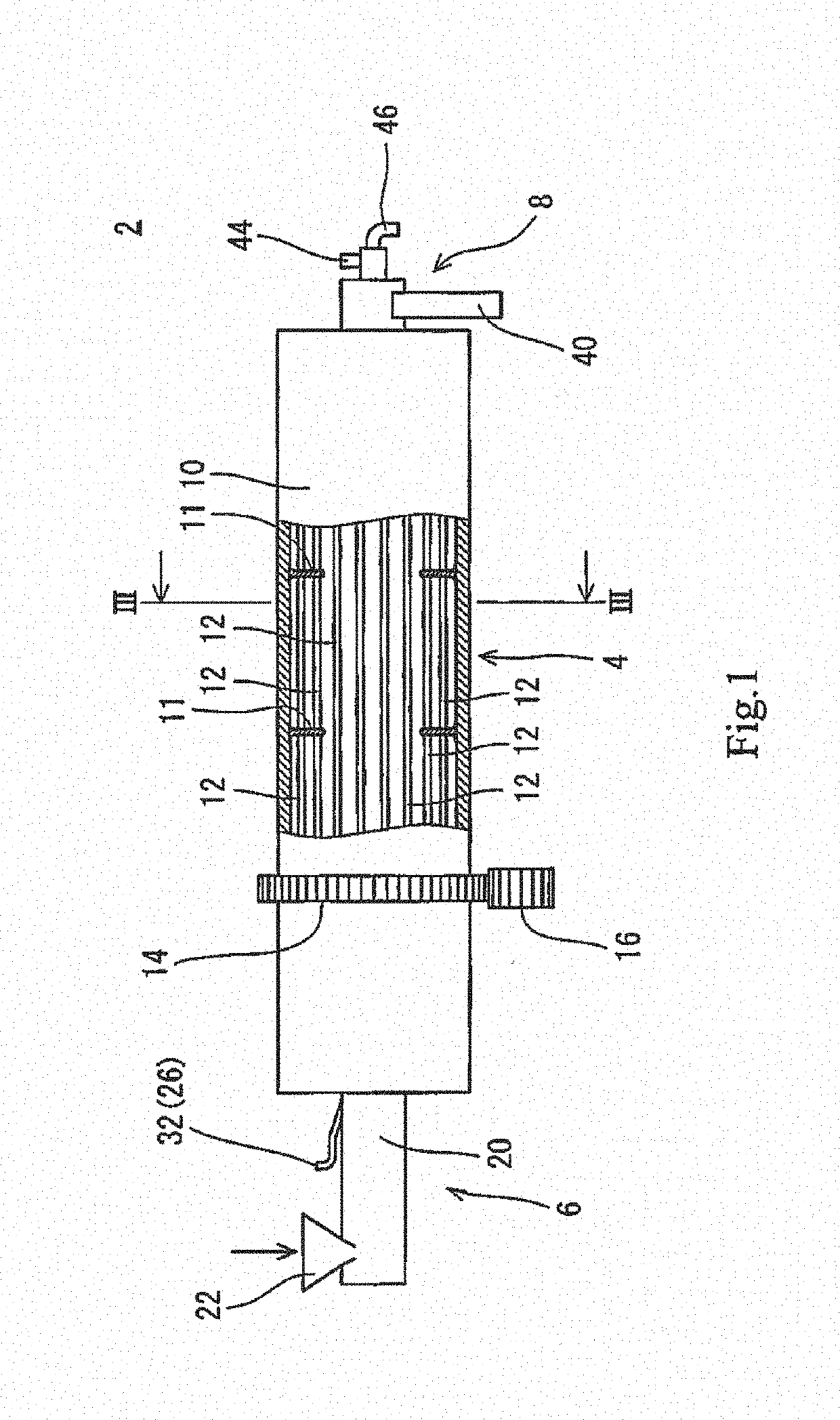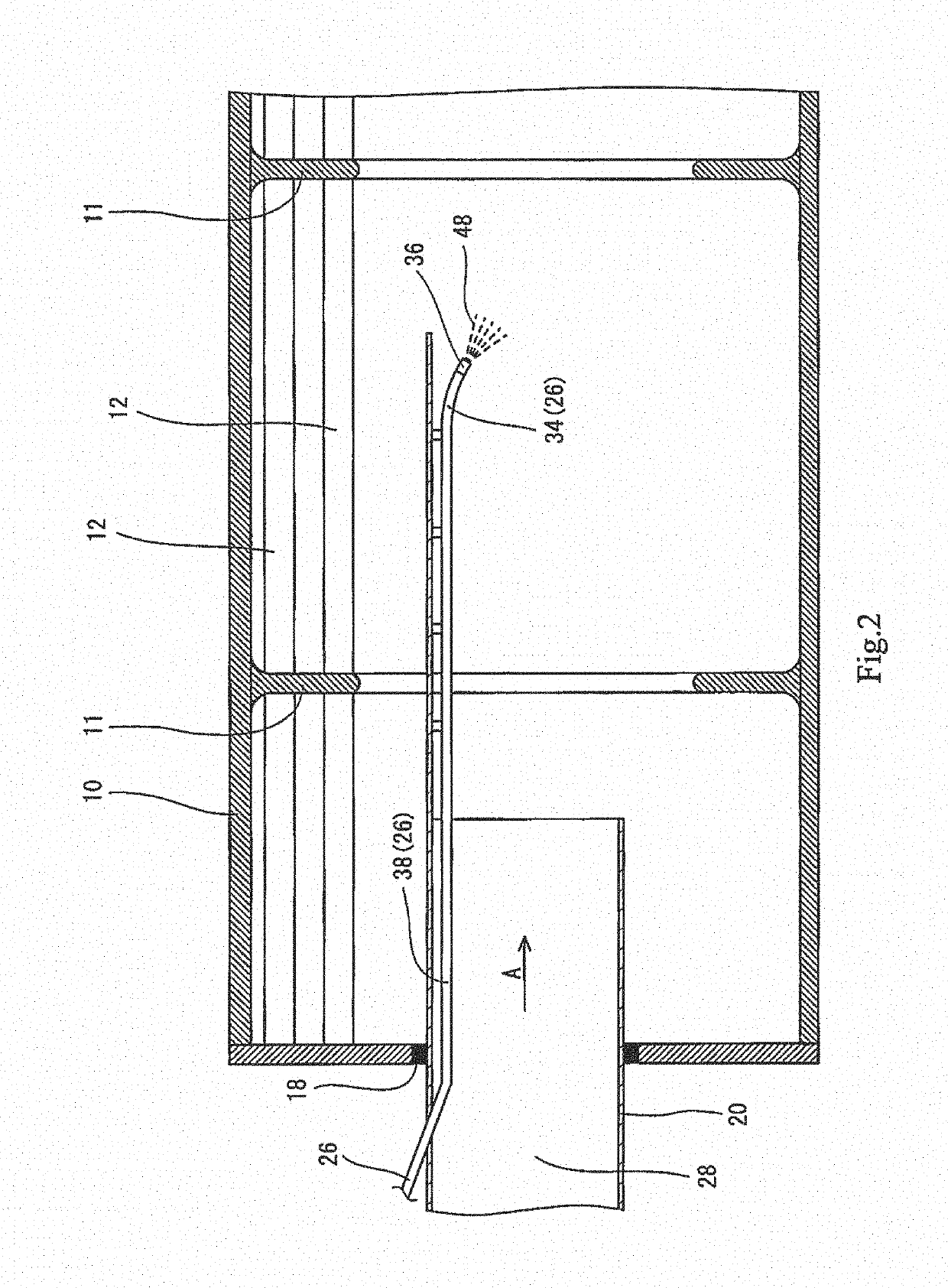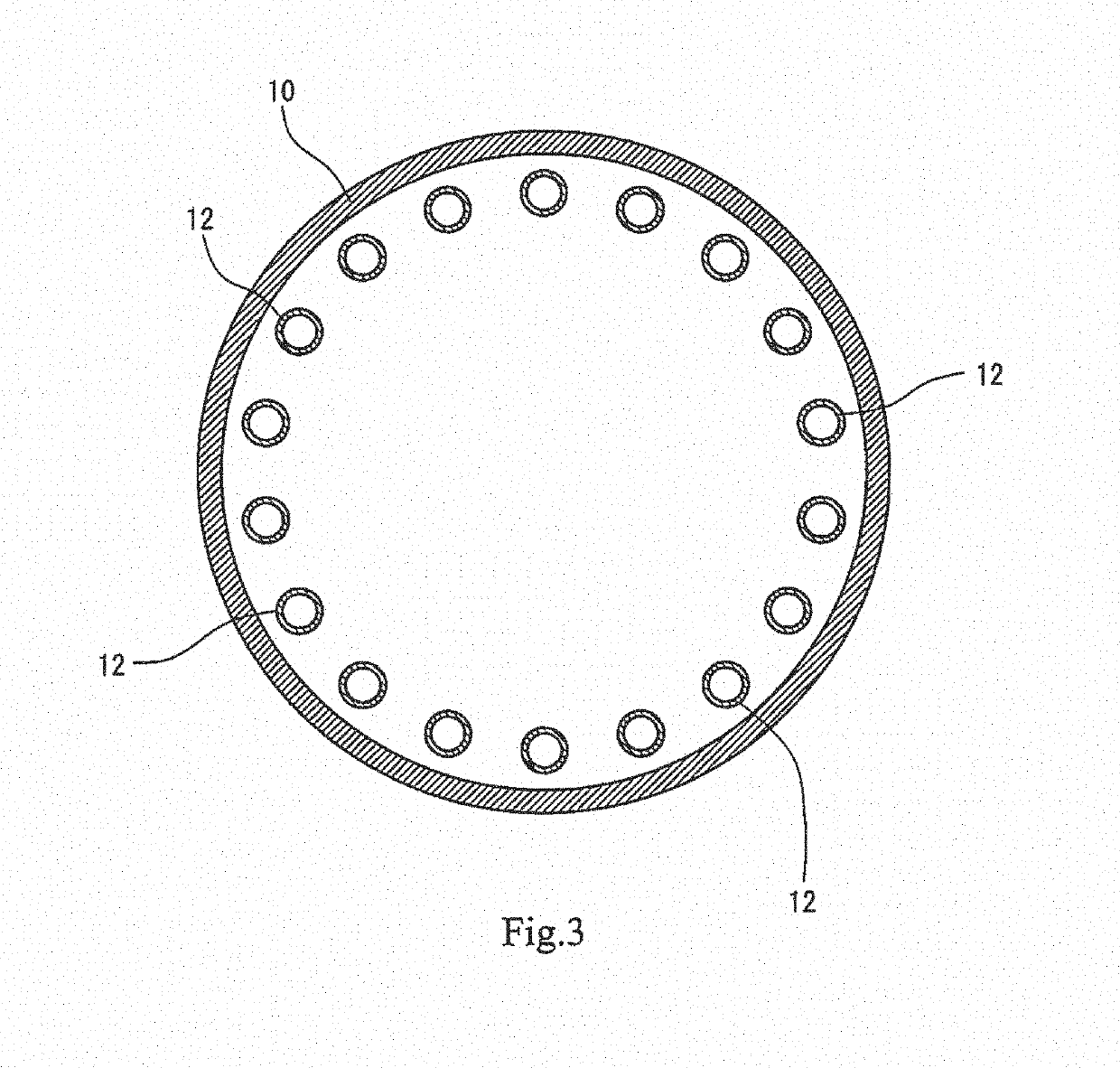Method for producing water-absorbent resin powder and production apparatus therefor
a technology of water-absorbent resin and production apparatus, which is applied in the direction of granulation in rotating drums, drying solid materials, drying machines, etc., can solve the problems of reducing the physical properties of the obtained water-absorbent resin in some cases, reducing the energy required for long time heating or cooling of hydrophobic organic solvents, etc., to achieve compact production process, reduce the amount of fine powder generated in the grinding step after drying, and compact production process
- Summary
- Abstract
- Description
- Claims
- Application Information
AI Technical Summary
Benefits of technology
Problems solved by technology
Method used
Image
Examples
production example 1
[0391]Prepared was a monomer aqueous solution containing 300 parts by mass of acrylic acid, 100 parts by mass of a 48% by mass sodium hydroxide aqueous solution, 0.61 parts by mass of polyethylene glycol diacrylate (average number n: 9), 16.4 parts by mass of a 0.1% by mass trisodium diethylenetriamine pentaacetate aqueous solution, and 273.2 parts by mass of deionized water.
[0392]Next, the monomer aqueous solution adjusted to 38° C. was continuously supplied by using a metering pump, and then 150.6 parts by mass of a 48% by mass sodium hydroxide aqueous solution was continuously line-mixed thereinto. At this time, the temperature of the monomer aqueous solution rose to 87° C. due to heat of neutralization.
[0393]Furthermore, 14.6 parts by mass of a 4% by mass sodium persulfate aqueous solution was continuously line-mixed, and then the mixture was continuously supplied to a continuous polymerization machine having a flat polymerization belt with weirs at both edges, such that a thick...
production example 2
[0395]A particulate hydrous gel PG(2) was obtained in the same manner as Production Example 1, except the lauryl dimethylamino acetic acid betaine aqueous solution was not added in the first gel-crushing in Production Example 1. The particulate hydrous gel PG(2) did not contain any surfactant, the moisture content thereof was 44% by mass, the average particle diameter d1 in terms of dry mass was 135 μm, and the proportion of particles having a particle diameter not greater than 150 μm was about 47% by mass. The physical properties of the particulate hydrous gel PG(2) are shown in Table 1 below.
production example 3
[0396]A particulate hydrous gel PG(3) was obtained in the same manner as Production Example 1, except the first gel-crushing was performed using a porous plate having a pore diameter of 3.2 mm and the second gel-crushing was not performed in Production Example 1. The physical properties of the particulate hydrous gel PG(3) are shown in Table 1 below.
PUM
| Property | Measurement | Unit |
|---|---|---|
| gel temperature | aaaaa | aaaaa |
| mass-average particle diameter d1 | aaaaa | aaaaa |
| mass-average particle diameter d2 | aaaaa | aaaaa |
Abstract
Description
Claims
Application Information
 Login to View More
Login to View More - R&D
- Intellectual Property
- Life Sciences
- Materials
- Tech Scout
- Unparalleled Data Quality
- Higher Quality Content
- 60% Fewer Hallucinations
Browse by: Latest US Patents, China's latest patents, Technical Efficacy Thesaurus, Application Domain, Technology Topic, Popular Technical Reports.
© 2025 PatSnap. All rights reserved.Legal|Privacy policy|Modern Slavery Act Transparency Statement|Sitemap|About US| Contact US: help@patsnap.com



